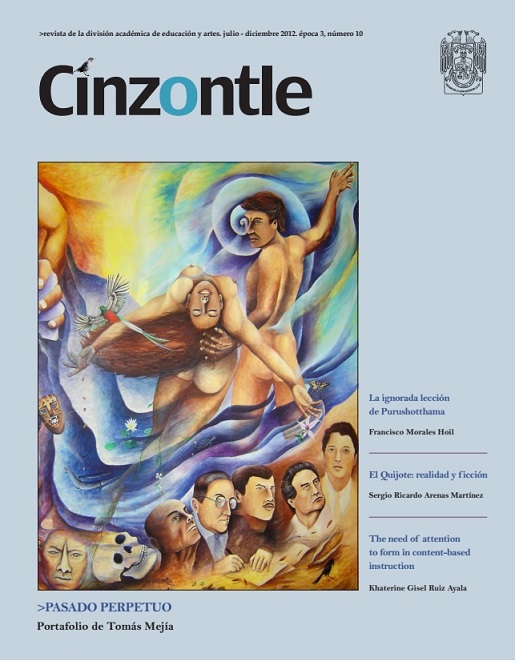The Need of Attention to Form in Content-Based Instruction
Abstract
Content subjects refer to subjects where subject matter is learnt via a second language (Van Patten, 2003, p. 28). Schleppegrell, Achugar and Oteiza (2004, p. 68) explain that the basic notion behind these courses is that the learning of an L2 should happen in conjunction with content. Nevertheless, although a new alternative approach to language learning, content based instruction (CBI) represents a challenge to teachers working with content subjects who have been primarily trained to teach a second language. This is due to two main reasons: teachers’ lack of knowledge to teach a second language through content and a lack of knowledge on the subject matter to be taught. This paper focuses on the first issue and reviews the need of attention to form in CBI and the pedagogical practices that could be implemented in these courses in order to pay attention to both form and content in benefit of the learner.References
- DeKeyser (2005). “Implicit and explicit learning”. In C. Doughty and M. Long (eds.). The handbook of second language acquisition. Malden: Blackwell.
- Doughty, C., & Varela, E. (1998). Communicative focus on form. In C. Doughty & J. Williams. (Eds.), Focus on form in classroom second language acquisition (pp.114-138). New York: Cambridge University Press.
- Ellis, R. (1997). Second Language Acquisition. UK: Oxford University Press. Gass, S., & A. Mackey. (2007). Input , interaction and output in second language acquisition. In B VanPatten and J. Williams (eds.) Theories in second language acquisition (pp. 175-199). Mahwah: Lawrence Erlbaum.
- Bostwick, M. (2001). Bilingual education of children in Japan: Year four of a partial immersion programme. In M. G. Noguchi & S. Fotos (Eds.), Studies in Japanese bilingualism (pp. 272-311). Clevedon, UK: Multilingual Matters.
- Burger, S & Chrétien, M. (2001). “The development of oral production in content-based second language courses at the University of Ottawa”. The Canadian Modern Language Review, 58, 84-102.
- Hall,J. (2002) Methods for teaching foreign languages:Creating a community of learners in the classroom. Pearson Education, Inc.
- Lazuruk, W. (2007). Linguistic, academic, and cognitive benefits of French immersion. The Canadian Modern Language Review, 63, 605-628.
- Lyster, R. (2004a). “Differential effects of prompts and recasts in form-focused instruction”. Studies in Second Language Acquisition, 26, 399-432.
- Lyster, R. (2004b). “Research on form-focus instruction in immersion classrooms: Implications for theory and practice”. Journal of French language Studies, 14, 321-341.
- Lyster, R. (2007). Learning and Teaching Languages through content: A counterbalanced approach. John Benjamins Publishing Company. Amsterdam, Philadelphia.
- Lyster, R., & Izquierdo, J. (2009). “Prompts Versus Recasts in Dyadic Interaction in Language Learning”, 59, 453-498.
- Lyster, R., & Mori, H. (2006). “Interactional feedback and instructional counter-balance”. Studies in Second Language acquisition, 28, 269-300.
- Netten,J. (1991). “Towards a more language oriented second language classroom”. In L. Malavé & G. Duquette (Eds.), Language, culture and cognition (pp.284-304). Clevedon,UK: Multilingual Matters.
-Ranta, L., & Lyster, R. (2007). “A cognitive approach to improving immersion students‘ oral language abilities: The Awareness-Practice-Feedback sequence”. In R. DeKeyser (Eds), Practice in a second language: Perspectives from applied linguistics and cognitive psychology (pp. 141-160). Cambridge: Cambridge University Press.
- Schleppegrell, M., Achugar, M.,& Orteíza, T. (2004). “The grammar of history: Enhancing content-based instruction through a functional focus on language”. TESOL Quarterly, 38,67-93.
- Södergård, M. (2008). “Teacher strategies for second language production in immersion kindergarten in Finland”. In T. Fortune & D. Tedick (Eds.), Pathways to bilingualism and multilingualism: Evolving perspectives on immersion education (pp. 152-173). Clevedon, UK: Multilingual Matters.
- Swain, M. (1996). “Integrating language and content in immersion classrooms: Research perspectives”. The Canadian Modern Language Review, 52, 84-102.
- Swain, M., & S. Lapkin (1995). “Problems in output and the cognitive processes they generate: A step towards second language learning”. Applied Linguistics, 16, 371-391.
- VanPatten, B. (2003). From input to output: A guide to second language acquisition. NY: McGraw Hill.


